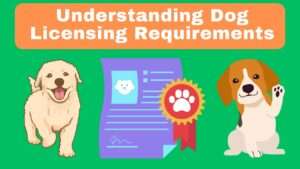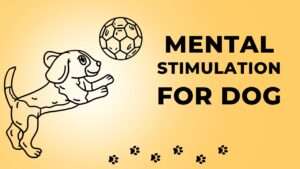In a bustling world filled with challenges and triumphs, many individuals rely on companionship and assistance to navigate through their daily lives.
For some, this comes in the form of service animals – extraordinary creatures trained to provide support and aid to their human partners in various ways. But what exactly is a service animal? How do they differ from other types of assistance animals?
Join us on a comprehensive journey to uncover all you need to know about service animals.
Contents Overview
Understanding Service Animals
Service animals are specially trained to perform tasks that mitigate their handler’s disability. These animals undergo rigorous training to assist individuals with disabilities, offering both physical and emotional support. While dogs are the most common type of service animal, other animals like miniature horses can also serve in this capacity.
Types of Service Animals
Service animals come in various types, each trained to provide specialized assistance to individuals with specific disabilities. Let’s delve deeper into the different types of service animals and the unique roles they play in enhancing the lives of their handlers:
- Guide Dogs:
- Purpose: Guide dogs, also known as seeing-eye dogs, assist individuals who are blind or visually impaired in navigating their surroundings safely.
- Tasks: These highly trained dogs help their handlers avoid obstacles, navigate street crossings, locate landmarks, and find destinations.
- Breeds: Labrador Retrievers, Golden Retrievers, and German Shepherds are commonly used breeds due to their intelligence, trainability, and temperament.
- Hearing Dogs:
- Purpose: Hearing dogs aid individuals who are deaf or hard of hearing by alerting them to important sounds and signals in their environment.
- Tasks: These dogs are trained to respond to doorbells, smoke alarms, telephone rings, and other auditory cues, ensuring that their handlers are aware of potential dangers or events.
- Alert Methods: Hearing dogs may nudge their handler, make physical contact, or lead them to the source of the sound to convey the alert effectively.
- Mobility Assistance Dogs:
- Purpose: Mobility assistance dogs support individuals with mobility impairments, including those who use wheelchairs or have difficulty walking.
- Tasks: These dogs assist with tasks such as retrieving dropped items, opening doors, turning light switches on and off, and providing stability and balance support while walking.
- Custom Training: Training for mobility assistance dogs is tailored to the specific needs and abilities of their handlers, focusing on tasks that enhance independence and mobility.
- Medical Alert Dogs:
- Purpose: Medical alert dogs detect and respond to medical emergencies or changes in their handler’s health condition, providing invaluable assistance in managing chronic illnesses or disabilities.
- Tasks: These dogs can alert their handlers to impending seizures, diabetic episodes, changes in blood sugar levels, allergic reactions, or other medical issues, allowing for timely intervention or assistance.
- Scent Recognition: Medical alert dogs are trained to recognize specific scents associated with their handler’s medical condition, enabling them to provide early warnings before symptoms become severe.
- Psychiatric Service Dogs:
- Purpose: Psychiatric service dogs offer support and assistance to individuals with psychiatric disabilities, including anxiety disorders, PTSD, depression, and bipolar disorder.
- Tasks: These dogs provide comfort during anxiety or panic attacks, interrupt self-harming behaviors, remind their handlers to take medication, and create a sense of security in various environments.
- Emotional Support: Psychiatric service dogs offer emotional support and companionship, helping their handlers manage symptoms, reduce stress, and improve overall well-being.
- Seizure Response Dogs:
- Purpose: Seizure response dogs assist individuals with epilepsy or seizure disorders by providing aid during and after seizures.
- Tasks: These dogs can alert others for help, provide physical support or stability during seizures, fetch medication or emergency devices, and offer comfort and reassurance to their handlers.
- Training Focus: Seizure response dogs undergo specialized training to recognize seizure activity, respond appropriately, and ensure the safety and well-being of their handlers during episodes.
- Autism Assistance Dogs:
- Purpose: Autism assistance dogs support individuals on the autism spectrum by providing companionship, emotional support, and assistance with daily activities.
- Tasks: These dogs help mitigate sensory overload, promote social interaction and communication skills, prevent wandering or elopement, and provide comfort during stressful situations.
- Structured Routine: Autism assistance dogs are trained to follow a structured routine and provide predictability and stability in their handler’s life, contributing to a sense of security and emotional regulation.
Each type of service animal undergoes extensive training tailored to their specific roles and the unique needs of their handlers. Through their dedication, intelligence, and unwavering bond with their human partners, service animals make a profound difference in the lives of individuals with disabilities, fostering independence, confidence, and inclusion in society.
Legal Protections and Rights
Legal protections and rights ensure that individuals with disabilities who rely on service animals have equal access to public spaces, accommodations, and employment opportunities. Let’s explore the legal framework surrounding service animals and the rights afforded to their handlers:
- Americans with Disabilities Act (ADA):
- Scope: The ADA is a federal law in the United States that prohibits discrimination against individuals with disabilities in various areas of public life, including employment, transportation, public accommodations, and government services.
- Definition of Service Animal: Under the ADA, a service animal is defined as a dog (or in some cases, a miniature horse) that is individually trained to perform tasks or work directly related to the individual’s disability.
- Public Accommodations: Title III of the ADA requires businesses and organizations that serve the public (such as restaurants, hotels, theaters, and stores) to allow individuals with disabilities to be accompanied by their service animals in all areas where customers are typically allowed to go.
- Employment: Title I of the ADA prohibits discrimination against qualified individuals with disabilities in all aspects of employment, including hiring, firing, job assignments, promotions, and compensation. Employers must provide reasonable accommodations, including allowing employees with disabilities to bring their service animals to work unless doing so would impose an undue hardship on the employer.
- Fair Housing Act (FHA):
- Scope: The FHA is a federal law that prohibits discrimination in housing based on race, color, religion, sex, disability, familial status, or national origin.
- Service Animal Accommodation: Under the FHA, housing providers must make reasonable accommodations to allow individuals with disabilities to keep their service animals, even in housing with policies prohibiting pets or specific breeds.
- No Pet Fees: Housing providers cannot charge additional fees or deposits for service animals, nor can they impose breed or weight restrictions on service animals.
- Air Carrier Access Act (ACAA):
- Scope: The ACAA is a federal law that prohibits discrimination in air transportation based on disability.
- Air Travel Accommodations: The ACAA requires airlines to allow individuals with disabilities to travel with their service animals in the cabin of the aircraft, free of charge. Airlines cannot impose breed restrictions or require advanced notice for service animals.
- State and Local Laws:
- Additional Protections: Some states and local jurisdictions have laws that provide additional protections for individuals with disabilities who use service animals. These laws may address issues such as access to housing, transportation, and public accommodations.
- Identification and Certification:
- Not Required: While some organizations offer voluntary identification or certification for service animals, there is no legal requirement for service animals to be registered or certified under federal law. Handlers are not obligated to carry documentation or provide proof of their service animal’s training.
- Verification: Businesses and individuals are generally not allowed to ask for proof of a service animal’s certification or training. They are only permitted to ask two specific questions to determine whether an animal is a service animal: (1) Is the animal required because of a disability? and (2) What work or task has the animal been trained to perform?
- Rights and Responsibilities:
- Access Rights: Individuals with disabilities accompanied by service animals have the right to access public places and accommodations on equal terms with others, regardless of pet policies.
- Behavior Expectations: Service animals must be under the control of their handlers at all times and should behave appropriately in public settings. If a service animal behaves aggressively or disruptively, the handler may be asked to remove the animal from the premises.
- Responsibilities: Handlers are responsible for the care and supervision of their service animals, including ensuring their health, hygiene, and behavior in public.
By upholding these legal protections and rights, society fosters inclusivity and ensures that individuals with disabilities have the opportunity to live independently and participate fully in all aspects of life with the assistance of their service animals.
Training and Certification
Training and certification play crucial roles in the development and recognition of service animals, ensuring that they are equipped to assist individuals with disabilities effectively. Let’s explore the process of training and certification for service animals in detail:
- Training Process:
- Professional Training Programs: Service animals undergo extensive training provided by professional trainers or organizations specializing in assistance animal training.
- Task-Specific Training: Training programs are tailored to the specific needs and tasks required by individuals with disabilities. For example, guide dogs are trained to navigate obstacles, while medical alert dogs learn to detect changes in their handler’s health condition.
- Socialization: Service animals are socialized from a young age to acclimate them to various environments, people, and situations they may encounter while performing their duties.
- Obedience Training: Service animals are trained to obey commands reliably and maintain focus on their tasks, even in distracting or challenging environments.
- Handler Training: In some cases, handlers participate in training sessions alongside their service animals to learn how to effectively communicate with and manage their assistance animals.
- Certification and Registration:
- Voluntary Programs: While there are organizations that offer voluntary certification or registration for service animals, there is no official government-mandated certification or registration process for service animals in the United States.
- Purpose of Certification: Certification programs may provide documentation or identification indicating that a service animal has undergone specific training and meets certain standards of behavior and obedience.
- Limitations: It’s important to note that certification or registration from a private organization is not required by law, and businesses or individuals are generally not allowed to ask for proof of certification or registration to determine whether an animal is a service animal.
- Legal Recognition:
- ADA Guidelines: According to the Americans with Disabilities Act (ADA), service animals are defined as dogs (or in some cases, miniature horses) trained to perform tasks or work directly related to the individual’s disability. There is no requirement for service animals to be certified or registered under federal law.
- Two Questions Rule: Businesses and individuals are only permitted to ask two specific questions to determine whether an animal is a service animal: (1) Is the animal required because of a disability? and (2) What work or task has the animal been trained to perform? They are not allowed to ask for proof of certification or training.
- Recognition of Task Performance:
- Performance-Based Assessment: Rather than relying on certification or registration, service animals are judged based on their ability to perform specific tasks that directly assist their handlers with disabilities.
- Behavior in Public: Service animals must exhibit appropriate behavior in public settings, including obedience, cleanliness, and non-disruptive conduct, to maintain their status as service animals.
- Continuing Education and Evaluation:
- Ongoing Training: Even after completing initial training, service animals may undergo continuing education to reinforce skills, learn new tasks, and adapt to the changing needs of their handlers.
- Handler Feedback: Handlers play a crucial role in providing feedback to trainers and adjusting training techniques to address any challenges or evolving requirements.
By focusing on comprehensive training programs tailored to the specific needs of individuals with disabilities, service animals are equipped to provide invaluable assistance and support, enhancing the independence and quality of life of their human partners. While certification and registration may offer additional documentation or recognition, the true measure of a service animal’s effectiveness lies in their ability to perform tasks that directly mitigate their handler’s disability.
Responsibilities of Service Animal Handlers
Service animal handlers play a crucial role in ensuring the well-being, effectiveness, and proper conduct of their service animals. Let’s delve into the responsibilities of service animal handlers and the essential tasks they undertake to maintain a successful partnership:
- Care and Welfare:
- Health Maintenance: Handlers are responsible for ensuring that their service animals receive regular veterinary care, including vaccinations, check-ups, and treatments for any health conditions.
- Nutrition: Providing a balanced and nutritious diet is essential for the health and vitality of service animals, ensuring they have the energy and stamina to perform their tasks effectively.
- Exercise: Regular exercise and physical activity are necessary to keep service animals mentally stimulated, physically fit, and well-adjusted to their working role.
- Training and Reinforcement:
- Consistent Training: Handlers must reinforce and maintain the training of their service animals to ensure they continue to perform tasks reliably and effectively.
- Practice Sessions: Regular practice sessions help service animals sharpen their skills, learn new tasks, and remain responsive to commands in various environments.
- Behavior Management: Handlers play a key role in addressing and correcting any behavioral issues that may arise, ensuring that their service animals exhibit appropriate conduct in public settings.
- Public Etiquette:
- Control and Supervision: Handlers are responsible for keeping their service animals under control at all times, ensuring they remain focused on their tasks and do not pose a risk to others.
- Cleanliness: Service animals should be well-groomed and clean to maintain a positive impression in public spaces and ensure their comfort and well-being.
- Non-Disruptive Behavior: Handlers must ensure that their service animals behave calmly and non-disruptively in public settings, minimizing distractions and avoiding disturbances to others.
- Advocacy and Education:
- Awareness: Handlers serve as advocates for themselves and others with disabilities, educating the public about the role and rights of service animals and dispelling misconceptions and stereotypes.
- Legal Knowledge: Understanding relevant laws and regulations about service animals empowers handlers to assert their rights and navigate potential challenges or disputes effectively.
- Communication: Effective communication with businesses, organizations, and individuals helps handlers address any issues or concerns related to access, accommodations, or treatment of their service animals.
- Emergency Preparedness:
- Emergency Plan: Handlers should have a plan in place for handling emergencies or unexpected situations, including medical emergencies, natural disasters, or disruptions to their service animal’s ability to perform tasks.
- Backup Support: Identifying alternative means of assistance or support in case of emergencies ensures that handlers can maintain their independence and safety even if their service animal is temporarily unavailable.
- Self-Care:
- Balance: Balancing the needs of their service animals with their well-being is essential for handlers to prevent burnout and maintain a healthy lifestyle.
- Support Networks: Seeking support from friends, family, and fellow service animal handlers can provide emotional support, guidance, and resources to navigate the challenges of caring for a service animal effectively.
By fulfilling these responsibilities with dedication, compassion, and commitment, service animal handlers contribute to the success of their partnership with their service animals and promote greater independence and inclusion for individuals with disabilities in society.
Challenges and Misconceptions
While service animals play a vital role in assisting individuals with disabilities, they and their handlers often face various challenges and misconceptions in society. Let’s explore some of the common challenges and misconceptions surrounding service animals:
- Access Denials:
- Misunderstanding of Rights: Despite legal protections, service animal handlers may encounter resistance or denial of access to public places, accommodations, or transportation due to ignorance or misunderstanding of their rights.
- Discrimination: Some individuals or establishments unlawfully deny access to service animals, citing pet policies or personal biases, leading to discrimination and barriers to participation for individuals with disabilities.
- Misidentification:
- Confusion with Pets: Service animals are sometimes mistaken for pets or emotional support animals (ESAs), leading to misconceptions about their role and rights in public spaces.
- Educational Efforts: Educating the public about the distinct roles and legal protections of service animals can help reduce misidentification and promote greater acceptance and understanding.
- Training Standards:
- Variability in Training: The lack of uniform training standards for service animals can result in variability in their skills and behavior, leading to challenges for handlers and businesses in assessing their reliability and suitability for specific tasks.
- Quality Assurance: Establishing standardized training guidelines and accreditation programs can enhance the consistency and quality of training for service animals, ensuring they meet the needs of individuals with disabilities effectively.
- Public Perception:
- Stigma and Prejudice: Some individuals may harbor negative attitudes or prejudices toward service animals and their handlers, viewing them as a nuisance or inconvenience rather than recognizing their essential role in supporting individuals with disabilities.
- Awareness Campaigns: Promoting awareness and positive portrayals of service animals and their handlers in media and educational campaigns can help combat stigma and foster greater acceptance and inclusion in society.
- Legal Ambiguities:
- Grey Areas in Law: The interpretation and enforcement of laws related to service animals may vary, leading to confusion and uncertainty for handlers, businesses, and individuals about their rights and obligations.
- Clarification and Guidance: Providing clear guidelines and resources on the legal rights and responsibilities of service animals can help address ambiguities and ensure compliance with relevant laws and regulations.
- Public Etiquette:
- Interference and Disturbances: Service animals may be subjected to distractions, harassment, or interference from members of the public, compromising their ability to perform tasks effectively and undermining their handler’s independence and safety.
- Education and Respect: Educating the public about proper etiquette and behavior around service animals, such as refraining from petting or feeding them without permission, can promote respectful interactions and minimize disruptions.
- Handler Advocacy:
- Asserting Rights: Service animal handlers often need to assert their rights and advocate for themselves in challenging situations, such as access denials or confrontations with businesses or individuals unfamiliar with service animal laws.
- Empowerment and Support: Providing resources, training, and support networks for service animal handlers empowers them to navigate challenges effectively and assert their rights with confidence.
By addressing these challenges and dispelling misconceptions through education, advocacy, and awareness efforts, society can create a more inclusive and supportive environment for individuals with disabilities and their service animals.
Bottom Line
In a world where independence and inclusivity are paramount, service animals play a vital role in empowering individuals with disabilities to lead fulfilling lives. Through their unwavering loyalty, specialized training, and invaluable assistance, these remarkable animals bridge the gap between limitation and liberation for their human partners. As we strive for a more equitable and compassionate society, let us continue to honor and uphold the rights and contributions of service animals and their handlers.






















+ There are no comments
Add yours